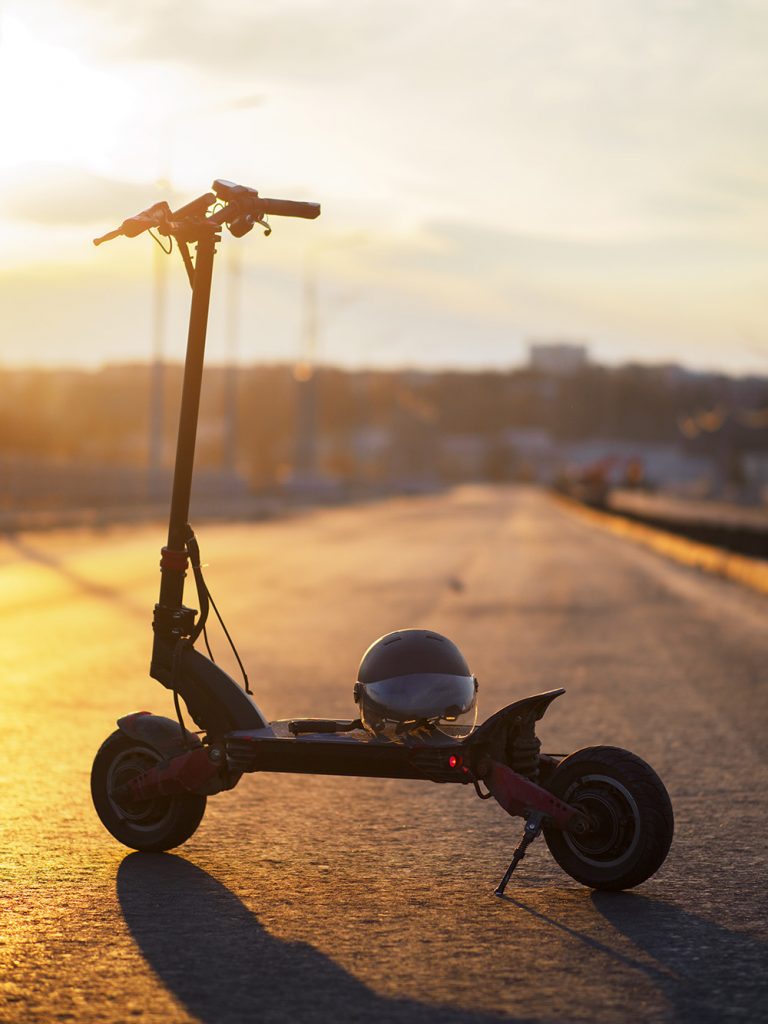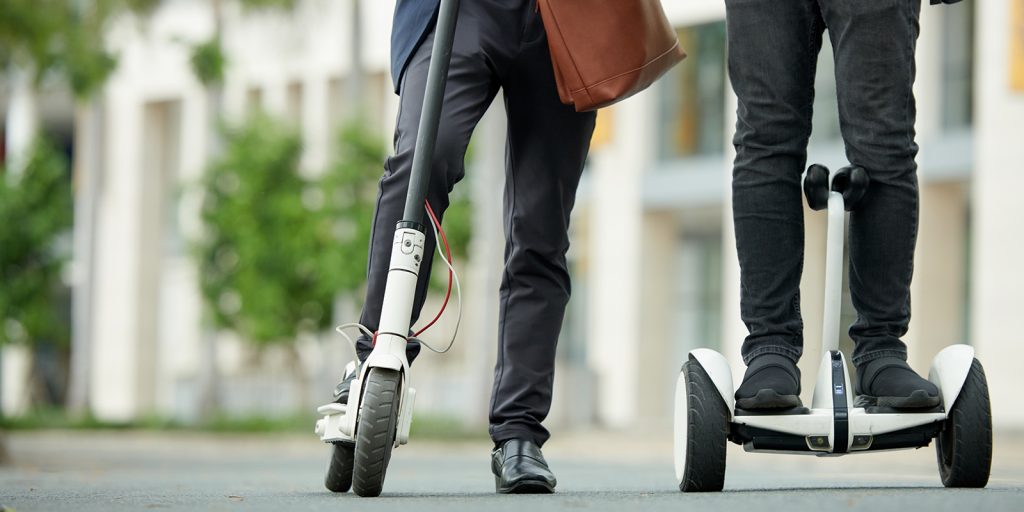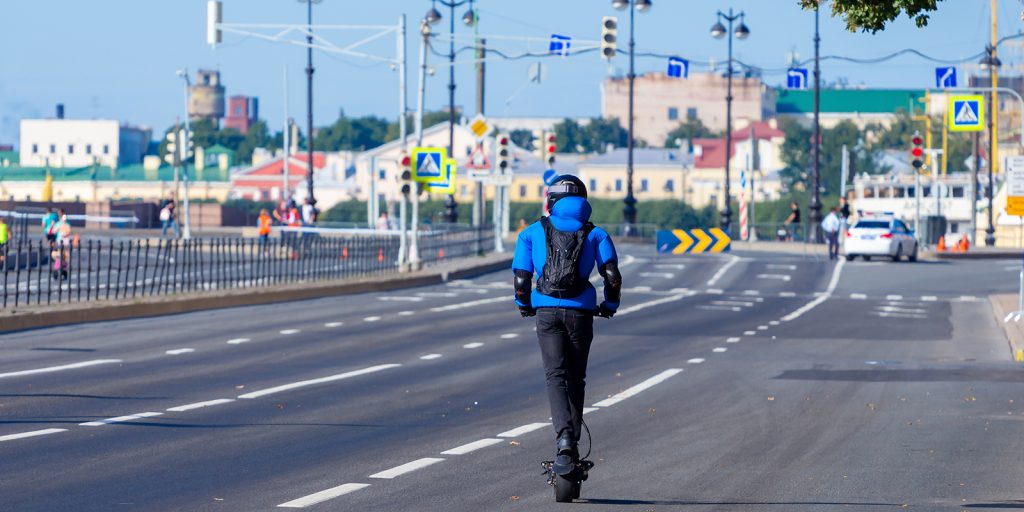Los patinetes eléctricos han revolucionado la movilidad urbana y son un fenómeno al alza, pero los estudios señalan que su siniestralidad se ha disparado un 37%.

El siniestro está protagonizado por un varón de entre 15 y 34 años que circulaba por la calzada y chocó contra otro vehículo. En un 59% de los casos, las lesiones son leves. En el 35%, graves. El desenlace fatal se produjo en un 6% de los casos. Este es el retrato robot del accidentado y de las consecuencias del siniestro con los denominados Vehículos de Movilidad Personal (VMP), en su inmensa mayoría, patinetes eléctricos. Solo hay que asomarse a la ventana de las ciudades de toda España, da igual que sean pequeñas, medianas o grandes, para observar el avance imparable de los nuevos reyes de la movilidad urbana. Y para ver, también, las luces y sombras de este fenómeno imparable.
Los datos del Análisis de la siniestralidad de los VMP 2023 publicado por la Fundación Mapfre y CESVIMAP muestran una progresión preocupante en cuanto a siniestralidad: 297 contabilizados en 2023, con 187 personas lesionadas entre conductores y peatones, y 12 víctimas mortales. La cifra de muertos ha aumentado un 37% respecto a 2022. Un hecho dramático que contrasta con el estancamiento, si no descenso, del número de fallecidos en las carreteras, por ejemplo, en accidentes de tráfico, a la baja desde hace prácticamente 30 años.
Cuando la extensión del uso de los ahora denominados VMP empezó a ser evidente, llegaron las regulaciones y normativas para conseguir una movilidad más segura en el espacio de convivencia entre diferentes opciones de movilidad en el que se ha convertido la ciudad. Lo primero fue definir qué era un VMP y diferenciarlo del resto de vehículos. De ahí la aprobación de las limitaciones a su uso en el Real Decreto 970/2020 de 10 de noviembre, donde se estableció un cambio en el Reglamento General de Circulación para ordenar el incremento del uso de estos dispositivos, que permitían una movilidad barata, rápida y de bajas emisiones. En una palabra: sostenible y asequible para la gente joven, y también para la no tan joven.

Definición, restricciones y certificación
Se prohibió a partir de este real decreto la circulación a los VMP por travesías, vías interurbanas, autopistas y autovías que circulasen por dentro de las ciudades. En las propias urbes, se restringió su paso por aceras, zonas peatonales, pasos de travesía y túneles urbanos. Y se definió qué era un VMP y qué no: son vehículos de una o dos ruedas, impulsados por un motor eléctrico, con una velocidad de 6 a 25 kilómetros por hora. El resto, es decir, los más potentes y rápidos, debían contar con la documentación que se exige, por ejemplo, a un ciclomotor: Permiso de circulación, matrícula y seguro.
La última novedad legal respecto a los VMP es la obligatoriedad de que los adquiridos a partir del 22 de enero de este 2024 deben estar certificados para su uso. Los comprados con anterioridad tienen de plazo hasta enero de 2027 para adquirir este certificado. El listado de VMP con certificación, hoy en día indispensable para poder circular, se puede consultar en la web de la Dirección General de Tráfico (DGT).
Más allá de la siniestralidad, otro de los problemas que se han detectado con el uso creciente de los VMP han sido los incendios que han provocado en los medios de transporte público, donde los usuarios los suben para hacer un desplazamiento combinado por las ciudades. Las cifras del estudio de la Fundación Mapfre revelan cómo estos siniestros, que son potencialmente peligrosos y han causado graves daños materiales, prácticamente se triplicaron de 2021 a 2022, cuando pasaron de 10 a 28, y descendieron ligeramente en 2023, cuando se quedaron en 23.
Este aumento de los incendios motivó que se aprobaran restricciones a su acceso a toda la red de Renfe, incluidos los convoyes de Ouigo e Iryo, además de quedar prohibido totalmente su acceso al transporte público de toda la Comunidad de Madrid, Cataluña y las Islas Baleares. Ciudades como Sevilla también regularon su acceso por este motivo, mientras que en Cuenca se debe pedir permiso previo para circular con ellos por las sendas ciclistas.

Sensibilización y buenas prácticas
Ante el aumento de las cifras de siniestralidad y los problemas que pueden ocasionar los VMP en la movilidad de las ciudades, el estudio de la Fundación Mapfre señala también buenas prácticas que se pueden poner en marcha para lograr el objetivo de una movilidad global más segura. Entre ellas, están la sensibilización sobre la necesidad del uso del casco y otros dispositivos de seguridad como luces o retrovisores, las guías con consejos para nuevos conductores de estos vehículos, el geovallado de zonas peatonales, esto es, zonas restringidas virtualmente para que los patinetes no puedan circular; controles de alcoholemia y campañas para la detección de prácticas inseguras y peligrosas, como el tándem, el bloqueo de ruedas y los derrapes.

Además, según un estudio del Real Automóvil Club de Cataluña (RACC) Mobility Club, los usuarios de VMP también detectan problemas más allá de su comportamiento, en elementos que dependen directamente de la acción de los diferentes gobiernos. De hecho, según el Barómetro RACC de la movilidad en VMP en Barcelona y sus accesos, el 83% de los usuarios no está satisfecho con la accesibilidad de la red por falta de continuidad y defectos de diseño, lo que les dificulta el cumplimiento de la normativa en sus desplazamientos.
Así, valoran negativamente el hecho de tener que compartir calzada con otros vehículos, especialmente los motorizados, y es en estos puntos donde más se saltan la norma y circulan por aceras y espacios reservados a la movilidad peatonal. Los conductores de VMP reconocen comportamientos de riesgo, como circular a más velocidad de la permitida, un 40%, y saltarse los semáforos si no hay otros vehículos circulando, cosa que llevan a cabo un 54% de los usuarios de Barcelona. En líneas generales, admiten también no conocer la red ciclable, lo que afecta a la elección de sus itinerarios en VMP por la ciudad.
Escribe: Rafael Honrubia